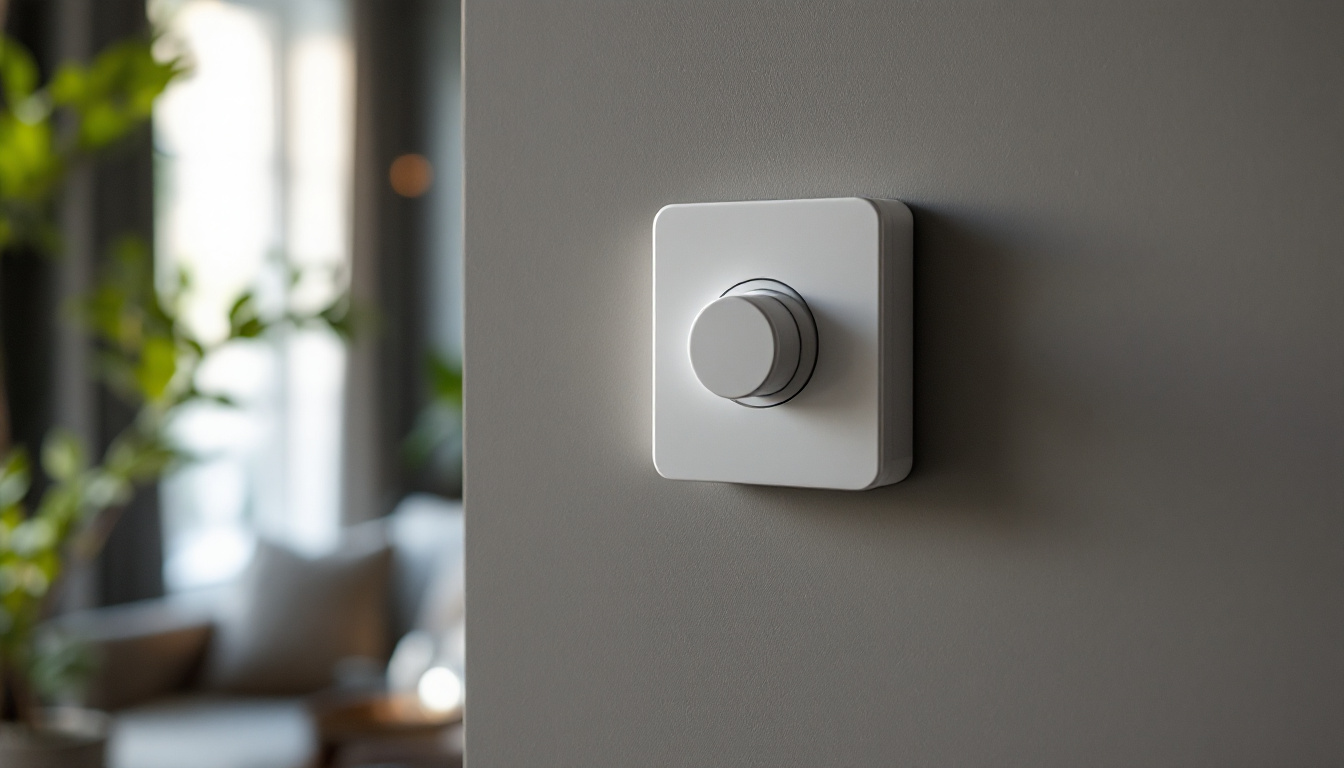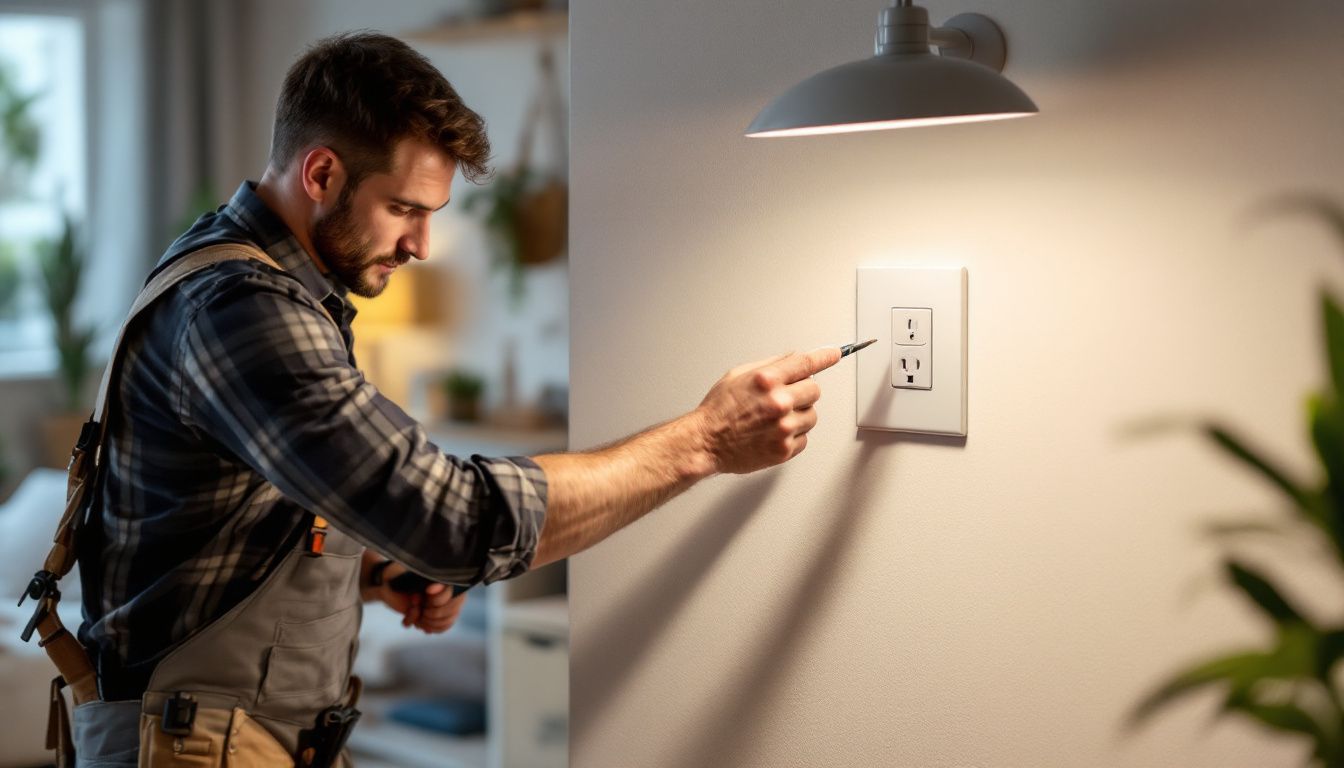
In the realm of lighting design and installation, efficiency is key. Lighting contractors are constantly seeking innovative solutions that not only enhance the quality of their projects but also streamline their processes. One such solution that has gained traction in recent years is the concept of the lighting wall. This article delves into what a lighting wall is, its benefits, and how it can significantly improve the efficiency of lighting projects.
A lighting wall is a dedicated space or panel where various lighting fixtures, controls, and technologies are integrated to create a cohesive lighting solution. It serves as a central hub for managing lighting systems in both residential and commercial environments. By consolidating multiple lighting elements into one location, a lighting wall simplifies the design and installation process.
Typically, a lighting wall consists of several key components that work together to enhance lighting efficiency. These may include:
One of the most significant advantages of a lighting wall is its design flexibility. Contractors can tailor the layout and components to suit the specific needs of a project. This adaptability allows for creative lighting solutions that can enhance the aesthetics and functionality of a space.
For instance, in a commercial setting, a lighting wall can be designed to accommodate different zones within an office, allowing for varied lighting intensities based on the activities taking place in each area. In contrast, residential applications might focus on creating a warm and inviting atmosphere in living spaces while ensuring adequate illumination in work areas. The ability to customize the arrangement and selection of fixtures not only meets practical needs but also contributes to the overall design theme of the environment.
Moreover, advancements in technology have further expanded the possibilities for lighting walls. With the integration of smart home systems, users can control their lighting through mobile apps or voice commands, allowing for seamless adjustments at any time. This level of control not only enhances convenience but also promotes energy efficiency, as users can easily turn off lights in unoccupied spaces or adjust brightness levels according to their preferences. As such, lighting walls are not just functional; they are becoming an essential aspect of modern design, reflecting the growing trend towards smart, sustainable living.
The implementation of a lighting wall can yield numerous benefits for lighting contractors and their clients. Understanding these advantages can help contractors make informed decisions when planning their projects.
By centralizing lighting controls and fixtures, a lighting wall reduces the complexity of installation. Contractors can save time during the setup process, as they no longer need to run multiple wiring systems or install separate controls for each fixture. This streamlined approach can lead to faster project completion and reduced labor costs.
Moreover, the ease of installation can also minimize the potential for errors, which often occur when dealing with multiple components. A simplified system means that contractors can focus on quality rather than troubleshooting complex setups. Additionally, the modular design of many lighting walls allows for future expansions or modifications without significant rework, making them a smart choice for evolving spaces.
Energy efficiency is a growing concern in the lighting industry, and a lighting wall can play a pivotal role in addressing this issue. With integrated controls and sensors, lighting walls can optimize energy usage by adjusting lighting levels based on occupancy and daylight availability. This not only lowers energy bills for clients but also contributes to sustainability goals.
Furthermore, many lighting walls are compatible with smart technology, allowing for remote monitoring and management through mobile applications. This feature enables clients to track their energy consumption in real-time and make adjustments as needed, fostering a proactive approach to energy management. By leveraging data analytics, clients can identify patterns in usage and adjust their lighting strategies accordingly, leading to even greater energy savings over time.
Clients are increasingly seeking customizable lighting solutions that enhance their comfort and experience. A lighting wall allows for easy adjustments to lighting settings, enabling users to create the desired ambiance for various activities. This level of control can lead to higher client satisfaction and repeat business for contractors.
In addition to customization, lighting walls can also incorporate features such as scene setting and scheduling, which further enhance user experience. For instance, clients can program specific lighting scenes for different times of the day or events, such as a bright, energizing setting for morning meetings or a soft, warm glow for evening gatherings. This versatility not only adds value to the space but also empowers users to take charge of their environment, fostering a sense of ownership and satisfaction with their lighting solutions.
Efficiency in lighting projects goes beyond just installation. Effective project management is crucial for ensuring that timelines and budgets are met. A lighting wall can facilitate better project management in several ways.
With all lighting controls housed in one location, project managers can easily monitor and adjust settings as needed. This centralized control system allows for quick responses to any issues that may arise during installation or after project completion. Furthermore, it simplifies training for clients, as they only need to familiarize themselves with one control panel. The intuitive design of modern lighting walls often includes touchscreens and user-friendly interfaces, making it accessible even for those who may not be tech-savvy. This ease of use can significantly reduce the learning curve, enabling clients to operate their lighting systems confidently and independently.
A lighting wall can serve as a focal point for communication among project stakeholders. By having a clear visual representation of the lighting plan, contractors, designers, and clients can easily discuss changes or adjustments. This enhanced communication can lead to more efficient decision-making and a smoother project workflow. Additionally, incorporating digital tools within the lighting wall, such as real-time updates and collaborative features, can further streamline discussions. Stakeholders can leave notes, share feedback, and even upload images directly to the system, ensuring that everyone is on the same page throughout the project lifecycle.
Another significant advantage of a lighting wall is its ability to improve resource allocation. By providing a comprehensive overview of the lighting setup and its requirements, project managers can better assess what materials and labor are needed at each phase of the project. This foresight allows for more strategic planning, minimizing waste and ensuring that resources are utilized efficiently. Moreover, with the ability to track energy consumption and performance metrics through the lighting wall, managers can make informed decisions about future upgrades or adjustments, ultimately leading to cost savings and enhanced sustainability.
In today’s interconnected world, the ability to integrate lighting systems with other building management systems is paramount. A sophisticated lighting wall can seamlessly connect with HVAC, security, and other essential systems, creating a cohesive environment that enhances overall building performance. This integration not only simplifies operations but also allows for advanced automation features, such as adjusting lighting based on occupancy or natural light levels. Such capabilities not only improve energy efficiency but also contribute to a more comfortable and productive atmosphere for occupants.
To illustrate the effectiveness of lighting walls, several case studies can provide valuable insights into their practical applications. These examples showcase how different projects have benefited from this innovative approach.
In a recent commercial office project, a lighting wall was implemented to manage the lighting for multiple work areas. By integrating smart controls and occupancy sensors, the office was able to reduce energy consumption by 30%. Employees reported increased satisfaction due to the ability to adjust lighting levels according to their preferences, resulting in a more productive work environment.
A residential renovation project utilized a lighting wall to enhance the home’s overall lighting design. The contractor integrated various fixture types and smart controls, allowing the homeowners to create different lighting scenes for various occasions. The result was a beautifully lit space that catered to the family’s lifestyle while also being energy efficient.
While the benefits of lighting walls are significant, there are also challenges and considerations that lighting contractors should be aware of when implementing this solution.
The initial investment for a lighting wall can be higher than traditional lighting systems due to the integration of advanced technologies and components. Contractors must weigh the long-term savings and benefits against the upfront costs to determine if this solution is right for their projects.
Implementing a lighting wall may require specialized knowledge and skills. Contractors may need to invest in training for their teams to ensure they can effectively design and install these systems. Partnering with manufacturers or technology providers can help bridge this gap and provide the necessary support.
As technology continues to evolve, the future of lighting walls looks promising. Several trends are emerging that could further enhance their efficiency and functionality.
The rise of smart home technology is transforming the way lighting systems are designed and controlled. Future lighting walls are likely to incorporate even more advanced smart features, allowing for seamless integration with other home automation systems. This will provide users with greater control and customization options.
With the advent of IoT (Internet of Things) technology, lighting walls may soon be equipped with data analytics capabilities. This will enable contractors and clients to monitor energy usage patterns and make informed decisions about lighting adjustments. The ability to analyze data in real-time can lead to even greater energy savings and efficiency.
The lighting wall is a powerful tool that can significantly enhance the efficiency of lighting projects. By centralizing controls, improving energy management, and streamlining project management, lighting walls offer a comprehensive solution for contractors seeking to elevate their work. While there are challenges to consider, the long-term benefits often outweigh the initial investment.
As technology continues to advance, the potential for lighting walls will only grow. Embracing this innovative approach can position lighting contractors at the forefront of the industry, offering clients cutting-edge solutions that meet their evolving needs. In a competitive market, leveraging the advantages of a lighting wall can lead to increased client satisfaction, repeat business, and ultimately, a more successful lighting contracting business.
Ready to take your lighting projects to the next level? At LumenWholesale, we provide the innovative solutions you need to create efficient, sophisticated lighting walls. Our spec-grade lighting products are designed to meet the highest industry standards, ensuring your projects shine with reliability and performance. Say goodbye to inflated markups and hello to unbeatable wholesale prices, free shipping, and the convenience of bulk buying. Elevate your lighting designs today and give your clients the quality they deserve. Discover the value of wholesale lighting with LumenWholesale at the Best Value.

Discover the essential guide for lighting contractors on selecting the perfect light switches with timers.

Discover the essential insights every lighting contractor needs to know about recess lights.

Discover how lighting contractors can enhance their projects by integrating light switches with outlets.

Discover the essential insights lighting contractors need to know about 8-inch retrofit LED downlights.